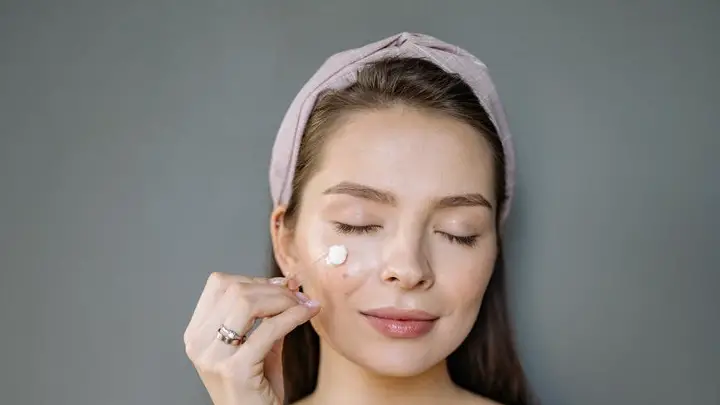Have you ever looked in the mirror and noticed your cheeks sagging? If so, you’re not alone. Saggy cheeks are a common issue that can happen to anyone—regardless of age, gender, or skin type.
Several factors can contribute to saggy cheeks, including aging, sun damage, smoking, dehydration, and genetics. However, there are also several ways to prevent and treat saggy cheeks.
Keep reading to learn everything you need to know about saggy cheeks—including the causes, prevention, and treatment.
What are saggy cheeks?
Saggy cheeks occur when the skin on the cheekbones becomes loose and hangs loosely from the rest of the face. The skin on the cheekbones may also appear thin and wrinkled.
Saggy cheeks can make the face look weary, and they’re especially noticeable when smiling or making facial expressions. People with this skin concern often have hollow eyes, as well as wrinkles and sagging skin around their mouths.
What causes saggy cheeks?
Saggy cheeks can be caused by several factors, which include:
Aging
As you get older, your body naturally produces less collagen and elastin, which are two key components for keeping skin firm. As these components decrease with age, the skin on the cheeks loses its elasticity and sags more quickly.
Genetics
Genetics can also cause sagging cheeks, which means you’re more likely to develop them if your parents had them. It also plays a role in whether you’ll have jowls or tight skin on your face.
Pregnancy
Pregnancy can cause several physical changes to the body, including saggy cheeks.
This is due to the increased levels of the hormone progesterone, which can cause your body to retain more water than usual. This can lead to an accumulation of fluids in the face, which can cause the cheek area to become stretched and saggy.
Weight loss
The fat in your skin gives it structure, so when you lose weight, your skin can begin to sag and droop. This is particularly noticeable in the cheeks, where the loss of fat can cause a hollowing out that can make your cheeks sag.
Smoking
When you smoke, you expose your skin to thousands of toxic chemicals, which causes it to become dry and brittle. This makes your cheeks more susceptible to wrinkles and sagging.
Smoking also decreases the production of collagen and elastin, two proteins that are essential for keeping skin firm and supple. As a result, the skin around your cheeks can start to sag and droop, giving you an aged and worn-out appearance.
How can you prevent saggy cheeks?
Saggy cheeks can be a result of several factors, but there are ways to prevent them. Here are some tips to help you keep your cheeks looking their best:
- Protect your skin from the sun. Too much sun exposure can damage your skin, leading to sagging cheeks. Wear sunscreen and hats when you’re outside.
- Avoid smoking. Smoking can damage the skin and make it look older, leading to sagging cheeks.
- Wash your face twice a day. Washing your face twice a day helps remove dirt and oil from your pores, which can reduce the appearance of sagging cheeks.
- Eat a balanced diet. Eating a healthy diet full of fresh fruits, vegetables, and lean proteins can help keep your skin looking youthful.
- Get enough sleep. Getting enough sleep helps to keep your skin healthy and glowing, both of which can help to prevent saggy cheeks.
- Exercise. Regular exercise helps to improve circulation and encourage healthy cell growth, which can help to keep your cheeks looking firm.
By following these tips, you can help prevent saggy cheeks and enjoy a more youthful appearance.
How can you fix saggy cheeks?
There are many ways to fix saggy cheeks, but not all are effective. Here are some of the most effective ways to fix saggy cheeks:
Invest in skincare
If you have sagging cheeks, the first thing you need to do is to get your skincare routine in order. Your cheeks will look much better if you spend a few minutes each day cleansing, using a moisturizer, and applying sunscreen.
Also, look for skincare products that contain retinol, as well as hydrating ingredients such as hyaluronic acid. Not only will these products make your cheeks firmer, but they’ll also make them plumper and smoother.
Take collagen supplements
As we age, our body’s natural collagen production decreases, resulting in sagging cheeks. Collagen supplements can help replace the lost collagen in the cheeks, becoming tighter and firmer.
Try cosmetic treatments
If you’re looking for a faster way to tighten your saggy cheeks, try cosmetic treatments such as Botox injections and laser skin tightening fillers. Both procedures can help you achieve a youthful-looking face while reducing the appearance of saggy cheeks.
Talk to your doctor about surgery
If the above options aren’t for you, it’s best to talk to your doctor about surgery. Your doctor can provide you with more information about the options available and recommend a procedure that is best for your needs.
They can also tell you about the potential risks and side effects of the procedure, as well as any pre-and post-operative care you may need to undertake.
How can you fix saggy cheeks naturally?
There are several ways to fix saggy cheeks naturally and get your youthful look back. Here are a few:
Eat a balanced diet
Eating a balanced diet that includes plenty of fresh fruits and vegetables can help to nourish your cheeks, making them more supple. Additionally, foods rich in vitamins and minerals can help to promote collagen production, which can help to fill out sagging skin.
Use natural remedies
Several natural remedies can help you tighten and tone the skin in your cheek area.
For example, you can combine equal parts honey and mashed banana, then apply the mixture to your cheeks and leave it on for 20 minutes. Honey is a natural moisturizer, while banana contains potassium, which can help to plump the skin.
Another option is to mix one tablespoon of aloe vera gel with one teaspoon of olive oil, then apply it to your cheeks and massage gently. The enzymes in aloe vera will help tighten your cheeks, and the olive oil will help nourish them.
With regular use of these natural remedies, you should start to see results within a few weeks.
Try facial exercises
Certain facial exercises can help to firm up sagging cheek muscles and give you a more youthful appearance. The best exercises to target the cheek area include cheek lifts and smile-and-hold exercises.
Cheek lifts involve lifting your cheeks towards your eyes and holding them for three seconds before releasing them. Smile-and-hold exercises involve smiling widely and holding that expression for five seconds before releasing it.
Doing these exercises regularly can help to firm up the muscles in your cheeks, reduce sagging, and give you a more youthful appearance.
Frequently Asked Questions

At what age does your face change most?
The face is constantly changing throughout life, but the most drastic changes tend to occur in the teenage years.
During this time, many people experience a dramatic shift in their facial features due to hormonal changes. After the teenage years, the face will continue to change as a result of aging, with wrinkles and lines becoming more prominent.
Why do you have saggy cheeks at 20?
Saggy cheeks at the age of 20 can be caused by several factors.
Genetics can play a role, as some people are simply more susceptible to having thinner or looser skin. Poor lifestyle habits such as smoking, dehydration, and not getting enough sleep can also contribute to saggy cheeks at the age of 20.
How much does Botox cost?
On average, Botox treatments can range anywhere from $200 to $600.
The amount you’ll pay for your treatment will depend on several factors, including the number of units of Botox required for your desired look, the geographical location of the clinic you’re visiting, and the reputation and experience of your chosen practitioner.
Conclusion
Saggy cheeks are a skin concern that occurs when the skin on the cheeks begins to lose elasticity and droops. This can be caused by a variety of factors, including genetics, weight loss, smoking, and the natural aging process.
To prevent your cheeks from sagging, protect yourself from the sun, eat a balanced diet, and avoid smoking. Getting enough sleep, exercising, and washing your face twice a day can also help to prevent saggy cheeks.
If your cheeks are already starting to sag, there are several treatments available. For example, you can take collagen supplements, or you can go for cosmetic treatments and surgery.
Thanks for reading.
Visit Serum101 for more information on age-related skin concerns.







